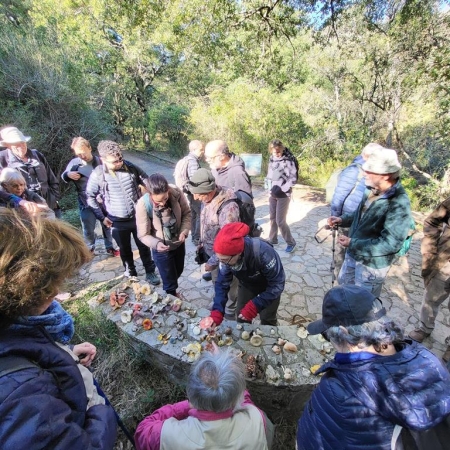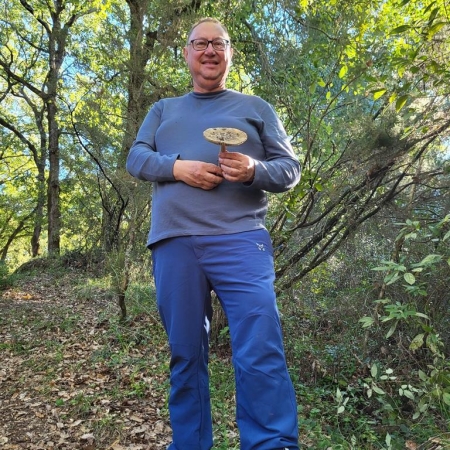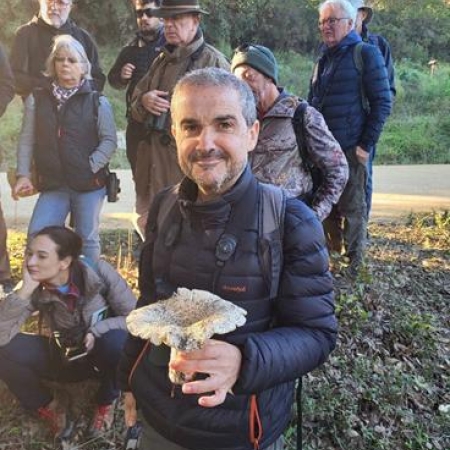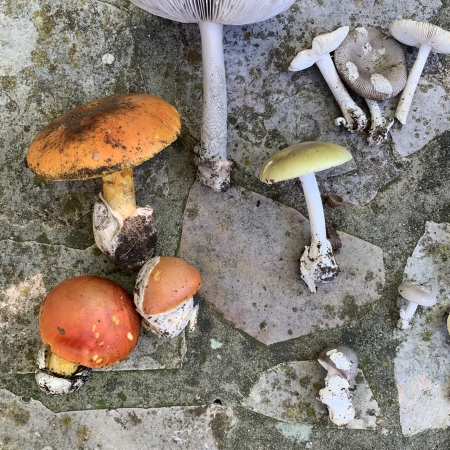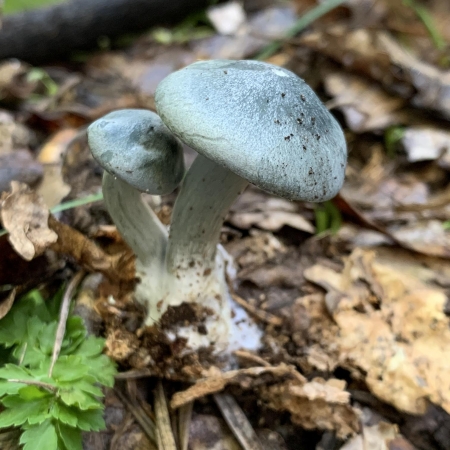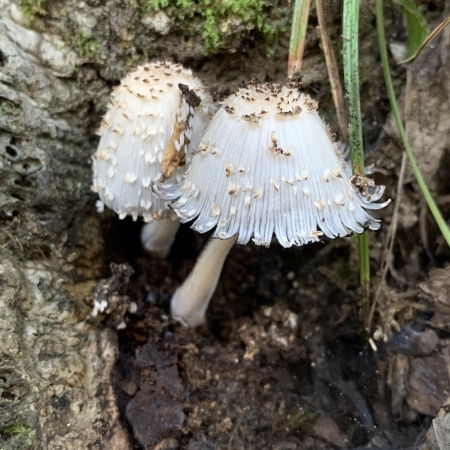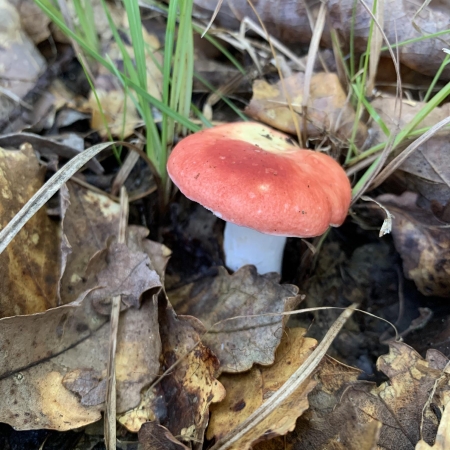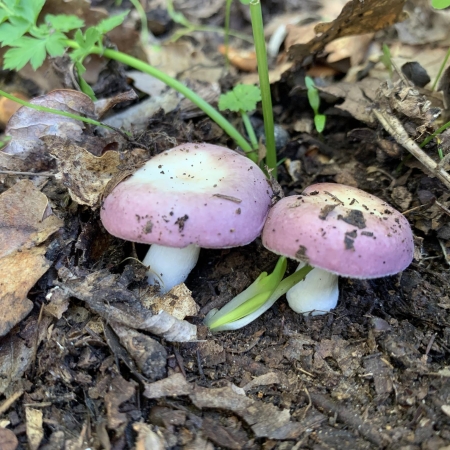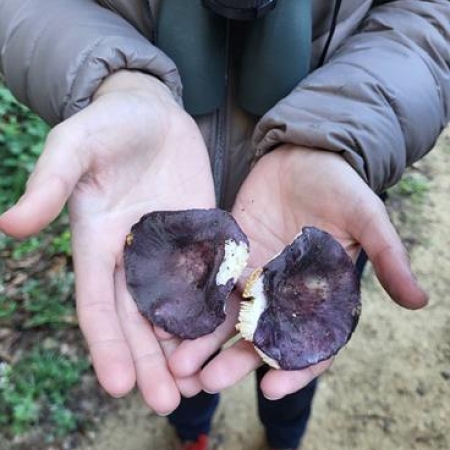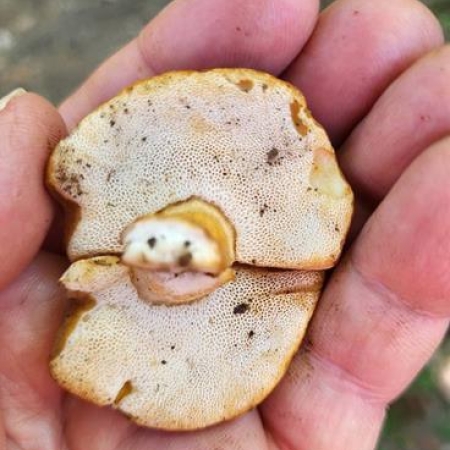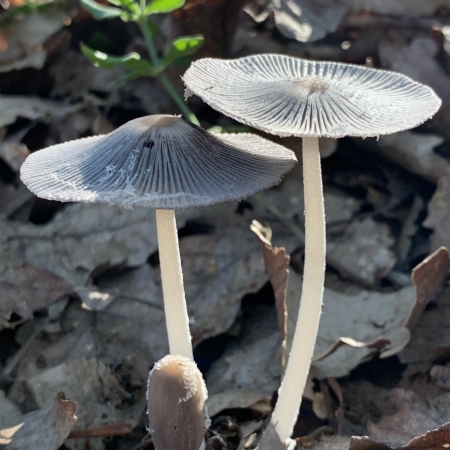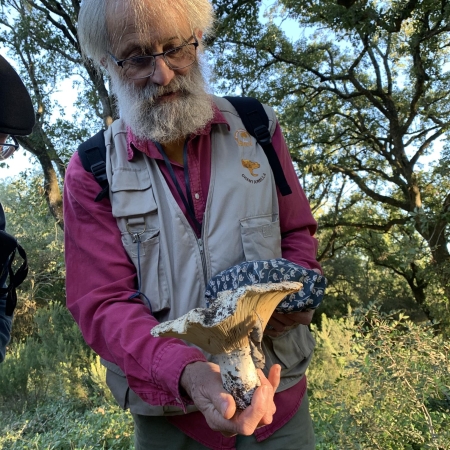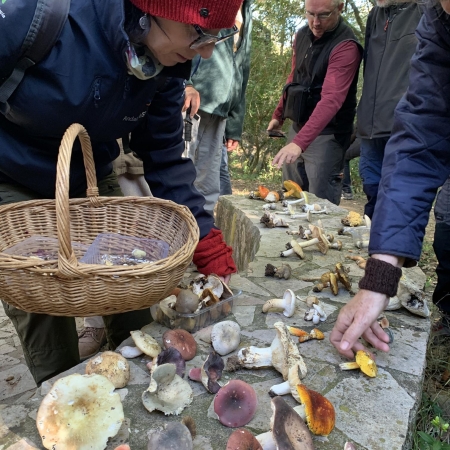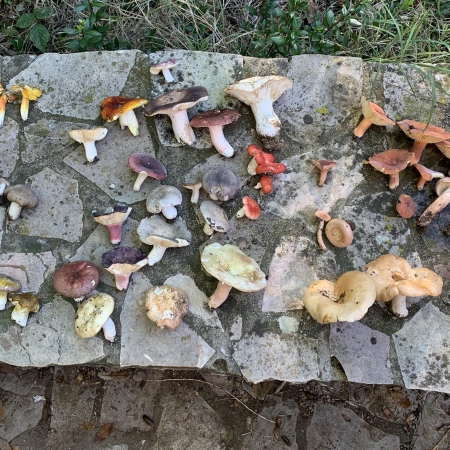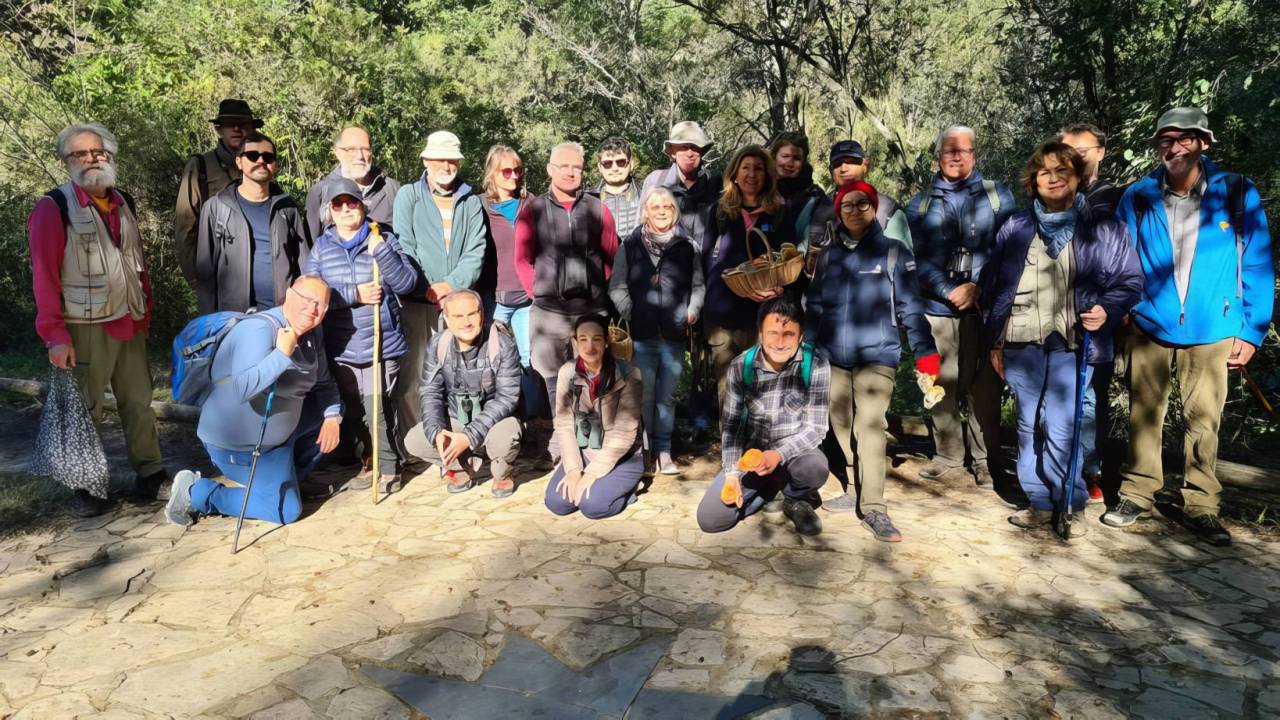
Mushrooms of Los Alcornocales outing
We held our mushroom identification outing on 25th November 2023. A brilliant day was had by all in the beautiful Valdeinfierno valley in Los Alcornocales Natural Park as we were joined by eight Spanish mycologist amateurs from the Mycology society Las Amigas Chantarellas, to help us identify mushrooms. 16 GONHS members attended which was one of the most popular outings we’ve had in a long time!
The diversity of mushrooms was incredible, with autumn being the best time of the year to go mushroom hunting. We were told that fungi are very hard to identify, and you need to look at various features of the fruiting body such as the shape of the umbrella, the lamella on the underside of the mushroom, the colour of the spores, the shape of the volva, as well as the overall colour of the fruiting body, which can vary depending on age and environmental conditions. One must also note the type of soil and habitat the fruiting body was found, as some mushrooms are found only in association with certain tree/plant species, or only grow on wood for example. We were encouraged to smell each mushroom as it can be a good way to distinguish between very similar species.
We found lots of different fungi including various ink-caps and wax-caps. The most diverse genera we came across were Russula and Lactarius species. These genera are hard to identify in the field, but a good identification feature of the Lactarius genus is that the mushrooms ooze a milky fluid when cut or pierced.
We encountered a few deadly mushrooms too such as the Death Cap, Amanita phalloides. Members of this genus need to be approached with caution as it includes both toxic and edible species which resemble each other. Other Amanita species we came across include Amanita caesarea, which is very edible and Amanita pantherina, with its distinctive mottled pattern on the cap.
Some really stunning species included the beautiful Coprinus comatus with its frilly edged umbrella and Clitocybe odora, a blue grey coloured small species which smells of anise. This mushroom can be used in desserts to add flavour.
We also saw some Boletus, also commonly known as Porcini, distinctive with their porous underside much like a pumice stone. This is a distinguishing feature of the Family. Boletus are generally very edible. Boletus pulchrotinctus turns blue upon contact with water. Some species we encountered didn’t even resemble a mushroom at all such as the coral fungus, Ramaria sp. In total we must have found over 60 species of mushroom!
